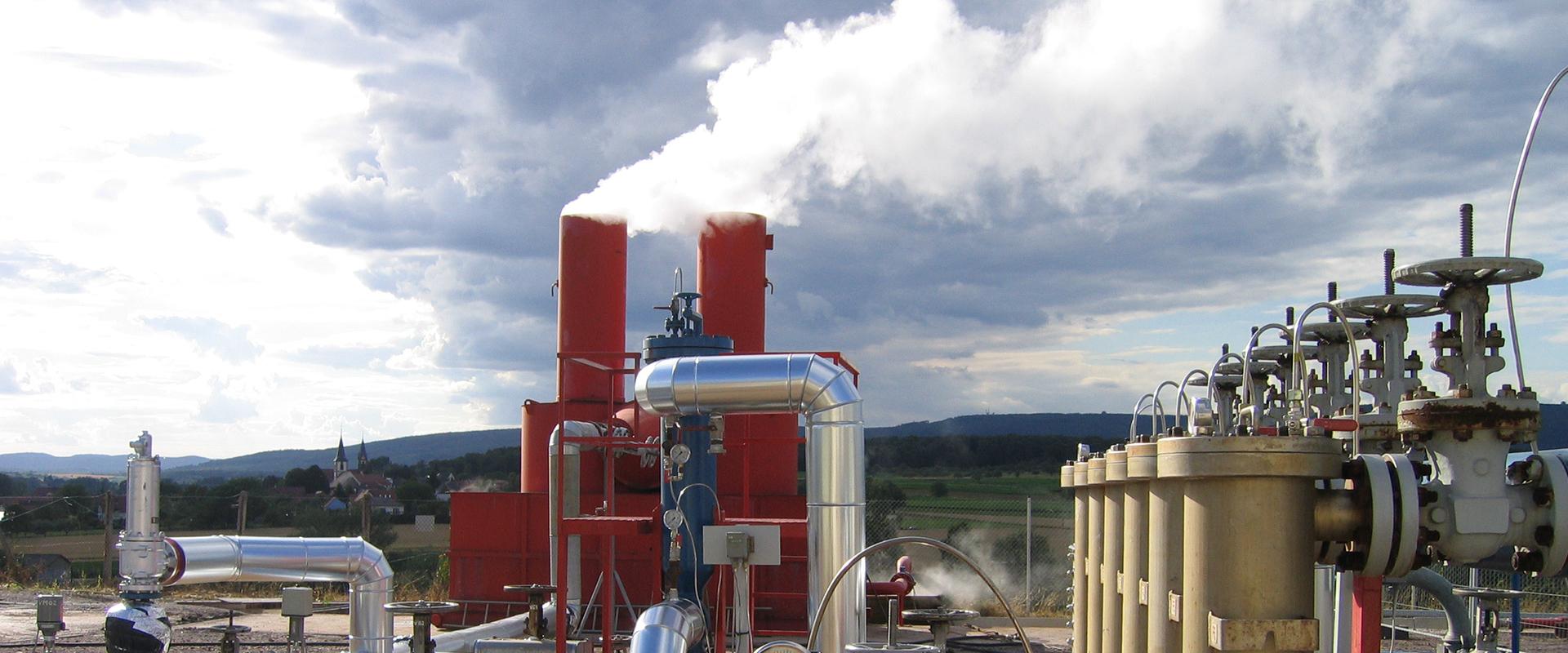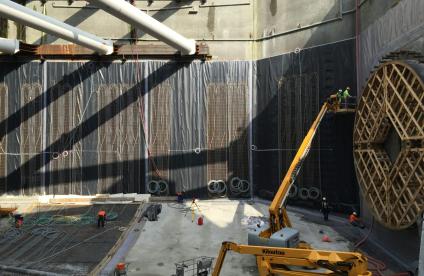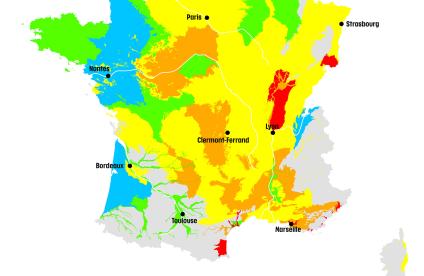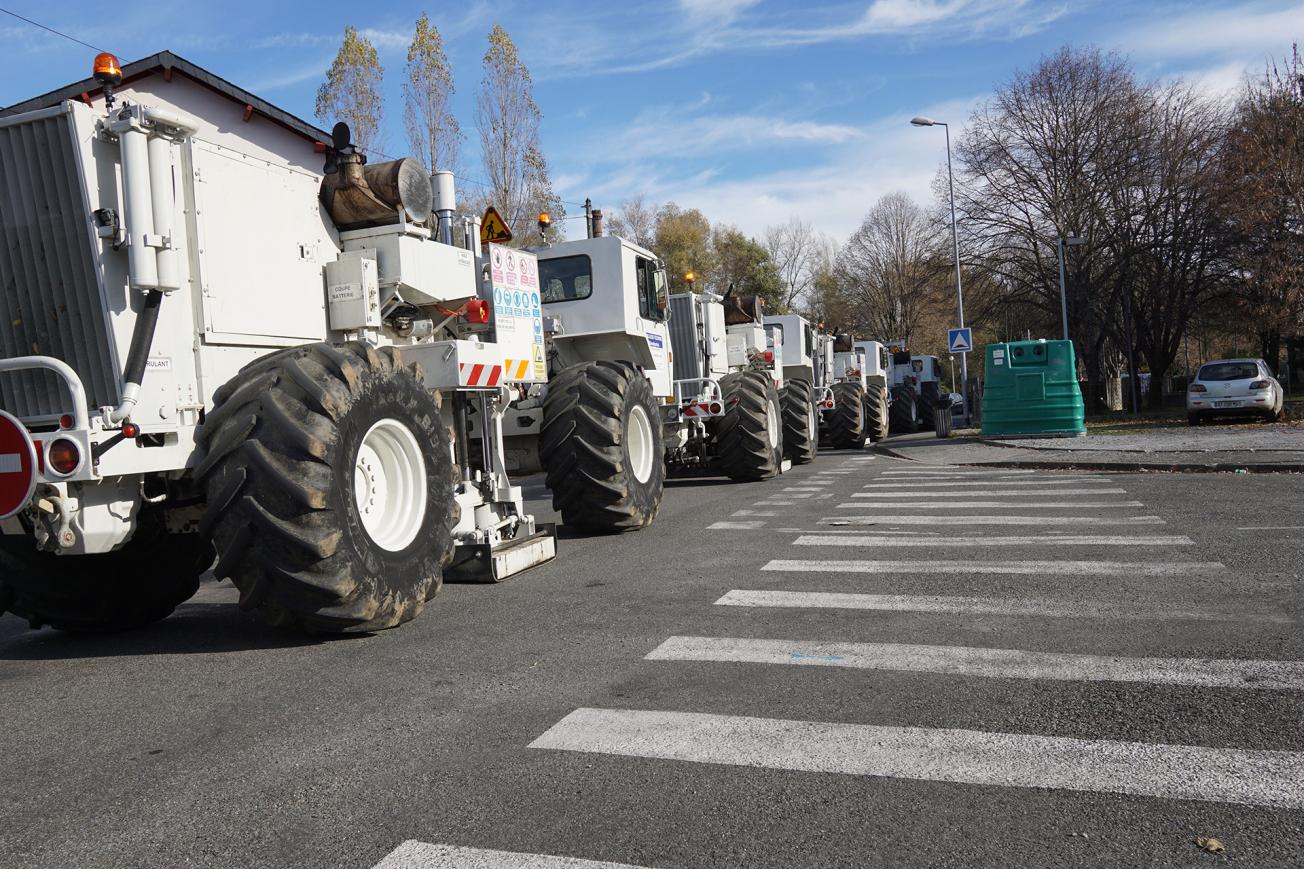
The first campaign, in the Riom sector (Puy-de-Dôme), is using a convoy of vibrator trucks to make geophysical measurements.
© BRGM
The Géodénergies scientific interest group, which involves 9 companies, 7 public research organisations including the BRGM, and 1 competitiveness cluster, is currently running two projects on deep geothermal energy extraction.
Much of current scientific research on geothermal applications is focused on the new Enhanced/Engineered Geothermal Systems technologies (EGS). The aim is to enable direct heat extraction from relatively impermeable rocks deep below the surface, in any geological context, to produce heat and/or electricity.
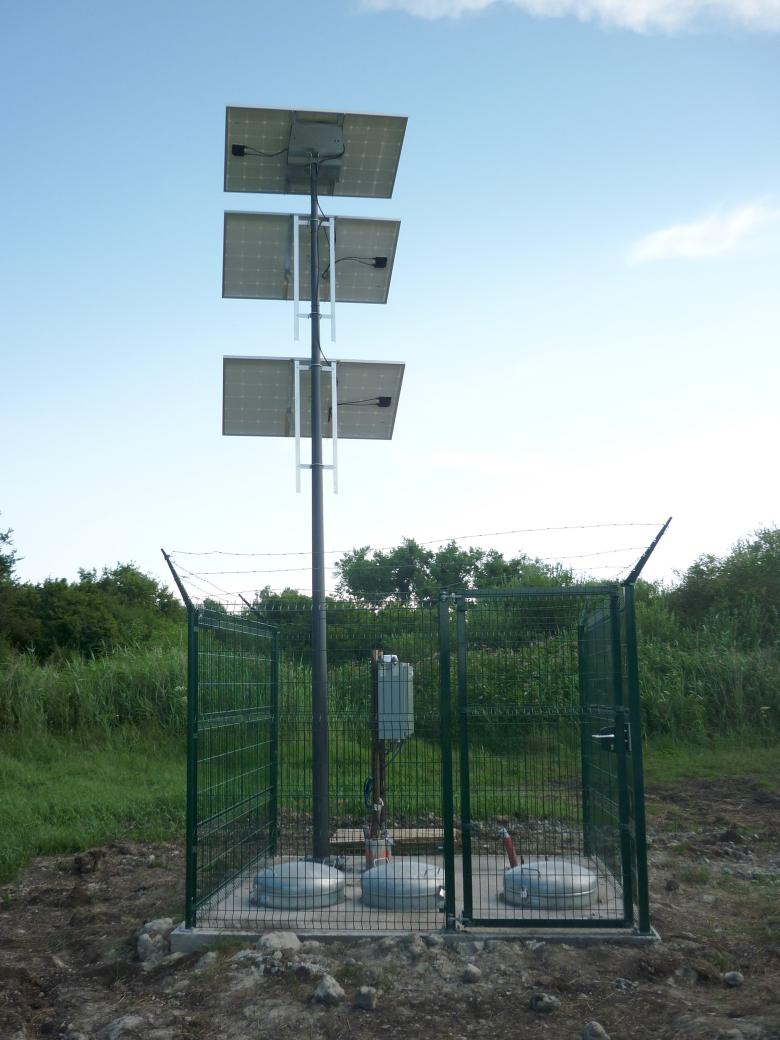
4 geophones, devices that record seismic waves, have been installed since last spring in Vendenheim (67) at a depth of a few meters.
© BRGM
Two geophysical measurement campaigns to develop deep geothermal heat extraction
The Reflet and Temperer projects began in 2015 and will last for 4.5 years. Like all Géodénergies projects, these are applied research projects that closely involve the industrial companies concerned, in this case Fonroche Géothermie and Electerre de France. Several geophysical measurement campaigns are already under way in the Puy-de-Dôme and Bas-Rhin areas.
The first, in the Riom sector (Puy-de-Dôme), is using a convoy of vibrator trucks to make geophysical measurements. These, which will continue for about a month, will produce a "sonogram" of the subsoil. This campaign is part of the Reflet project on characterisation of deep geothermal reservoirs in fault zones.
The second project, Temperer, complements the first by focusing on the collapse basins of the Rhine and Limogne rifts. In this case, the aim is to record very low magnitude micro-tremors (<2, at the threshold of human perception) before, during and after drilling of the production and injection wells. The aim is to ascertain the initial behaviour of the faults and to monitor changes during the course of the geothermal project.
Géodénergies: subsoil resources for a successful energy transition
Géodénergies is a scientific interest group established to develop high added-value, cutting-edge integrated technologies and services for zero-carbon energy involving use of the sub-soil. The target areas for development are:
- underground storage of CO2 to reduce the adverse climate impacts of fossil fuel use,
- energy storage in different forms (heat, electricity in the form of compressed air, hydrogen) to support more deployment of wind, solar and other forms of renewable energy,
- geothermal extraction for direct production of non-intermittent heat and "green" electricity.
5 projects lasting two to four years with a budget of €1 - 8 million per project have been launched since the creation of Géodénergies, each with five to six partners.

